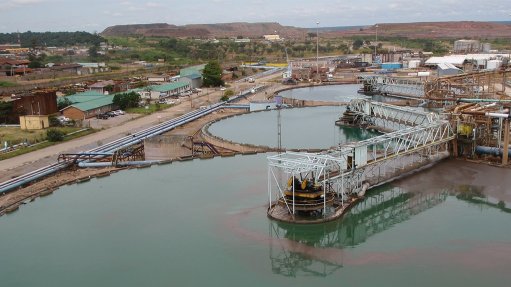
AFRICAN ADVANCEMENT Restarting the Kamoto/KOV project in 2017 will contribute to a yearly increase of 6.2% in copper supply from Africa over 2015 to 2019
The protracted period of lower commodity prices, which started during 2011, will leave a legacy of limited new capital for exploration and development spend in the mining sector, including the copper industry, which is moving towards a supply deficit, says research and consultancy group Wood Mackenzie’s copper market analysis team.
The outlook for the copper market over the next two to three years indicates surplus supply, underpinning higher-than-ideal levels of refined metal stocks, the team notes. Prices are predicted to yield to the pressure of surplus stocks and, as a result, copper quotes will slip to a yearly average low by 2017, below what Wood Mackenzie views as the fundamental support level for prices.
The copper analysts add that another year of subpar prices in the offing is likely to trigger another round of copper production cuts during 2017 and 2018. They point out that the need for output curtailments could, however, be mitigated by the pace at which multinational commodity trading and mining company Glencore reactivates its African mine capacity of 450 000 t/y of copper during 2017.
“The extended period of lower commodity prices has resulted in weak earnings growth, affecting company valuations and placing some entities under threat of credit-rating downgrades, as debt burdens have spiralled,” says the team. It adds that, to address the situation, companies are adopting various measures to raise cash and reduce debt, including the curtailment of exploration and development projects.
“Simultaneously, average ore grades will continue to decline and the combined effect of all these factors will result in the market moving swiftly into deficit from 2020 and, with declining stocks, we expect a positive price response.”
However, there are several solvent extraction and electrowinning projects due to come on stream across the Copperbelt region, in Zambia and the south of the Democratic Republic of Congo (DRC), highlights the Wood Mackenzie team. These two countries will be the principal contributors to a 6.2% a year increase in copper supply from Africa up to 2019.
The ongoing expansion at DRC-focused copper and cobalt miner Katanga Mining’s Kamoto underground mine and KOV openpit, which are forecast to restart mining in mid-2017, and the commissioning of consortium Sicomines’ Dikuluwe/Mashamba projects and diversified miner Zijn Mining Group’s majority-owned Kolwezi projects are key reasons for the team’s forecast increase in production capacity in the country.
In Zambia, diversified miner First Quantum’s new Sentinel mine – which started production in 2015 – together with the restart of production at copper miner Mopani’s Mufulira and Nkana mines in mid-2017, will contribute to the additional production capacity up to 2019, the analysts say.
The team notes that copper mines in Africa face a number of unique operational challenges, including high power costs and unreliable electricity supply, owing to the low water level of the Kariba dam, from which electricity is generated using hydropower. With Zambia and the DRC holding general elections this year, the political instability associated with a change of government could be yet another challenge for mines in the region.
In addition, logistics are a challenge, as producers in both these landlocked countries are highly dependent on port infrastructure in other countries such as South Africa and Tanzania. The team highlights that some producers are trucking material across three borders to get their metal to port, which adds significant additional costs. This is further aggravated by high fuel costs in some countries.